Fungus gnats are tiny gnats that fly close around your plant pots. They are small and harmless to humans. It’s easy to miss them at first or mistake them for fruit flies.
Plant people tend to overwater. This causes root rot, Adult Fungus gnats want your fungus rich wet soil. It’s full of organic matter they need to complete their lifecycle.
In its various life stages, a Fungus Gnat feasts on your plants roots and plant parts. This doesn’t actually kill the plant by itself.
However, root damage caused by fungus gnats allows diseases (especially viral and fungal problems) to install themselves in your plants. Hence the name. Fungus gnats spread fungus on the bottom of their feet from one plant to another.
You’ll eventually notice the plant is suffering but you may not realize the culprits are those innocent looking gnats. And by the time you notice them a fungus gnat infestation is usually already well underway.
We don’t want them in our homes or greenhouses. This article discusses how to kill fungus gnats and manage your plants to avoid fungus gnat infestations in future.
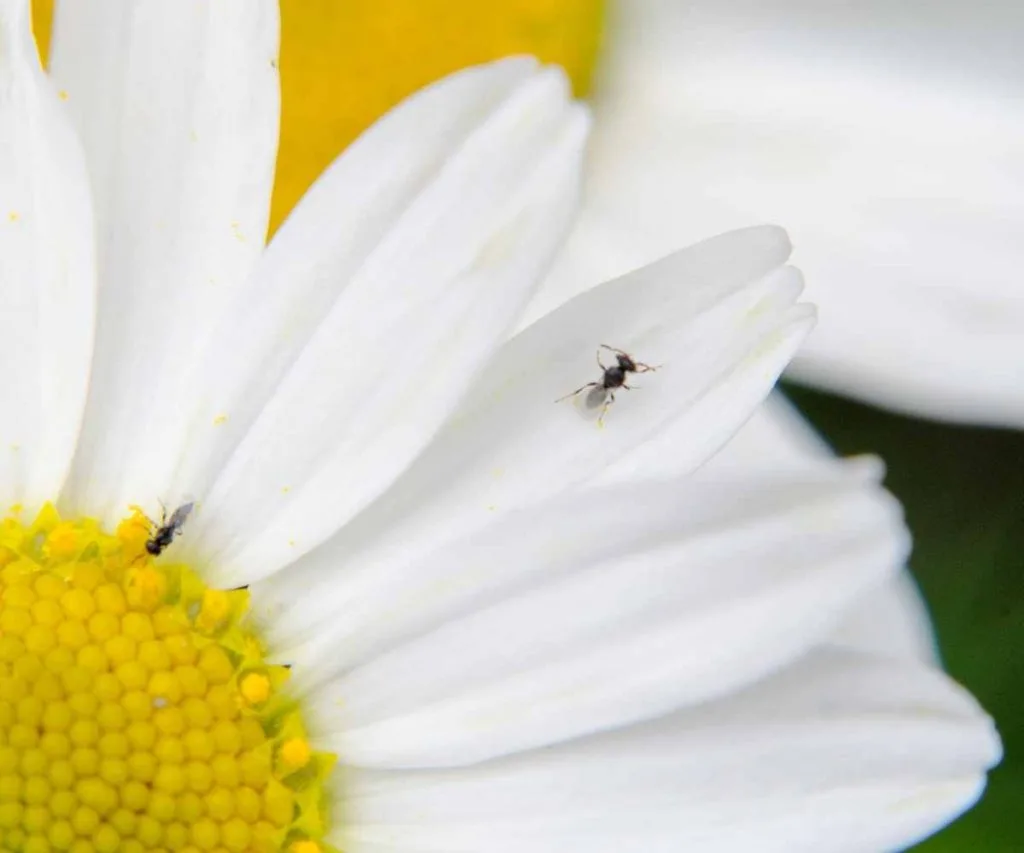
Where do Fungus Gnats Come From?
These itty bitty Gnats appear seemingly out of thin air. They didn’t. Fungus Gnats thrive in wet moist soils and they love humidity. Your moist organic rich soil is what attracted them.
Gnats may enter your home (or greenhouse) in several ways.
- Fungus gnats eggs can live very well in purchased soil mixes with compost and peat moss added in. To avoid purchasing gnats along with your potting soil choose sterilized potting soils if you can find them.
- Larva and eggs may also be in the soil of new plants you purchase at the garden shop. Commercial growers have gnats too.
- Your gnats may fly in locally from outside to live on your plants as adults if they are attracted.
Once fungus gnats infest your plants they are tough to kill off. Houseplant pests are just a part of the hobby. Learn about fungus gnats and get a plan.
Where to look for Gnats:
If you see fungus gnats on plant pots or the plants it’s time to take action.
They feed on the fungus in your wet soil. No fungus? No problem. Fungus gnats also snack on your healthy plants tissue.
Then the adults lay tiny eggs in the soil.
The eggs turn into hungry larvae. Fungus gnat larvae feed on your plants roots and fungi in the soil. Notice the green soil in the picture. That is fungi and the larvae love it.
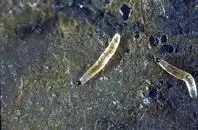
Photo Curtesy of the University of California
After the roots and plant tissues are left with open wounds they are susceptible to various pathogens. Your plants will droop and may well die if the infestation gets too bad.
Fungus Gnat Life Cycle:
Since the gnat lifecycle is completed in a month in your plant pot total eradication of gnats will take some time.
You may have large numbers of gnats in various stage of the life cycle all in one pot and not realize it. If you see a couple gnats. ACT.
These pesky insects have four life stages. From the adult fly to eggs to larvae to pupa and back to the fly it takes about 28 days. We have to stop one of these stages completely to disrupt the life cycle and eliminate the gnats.
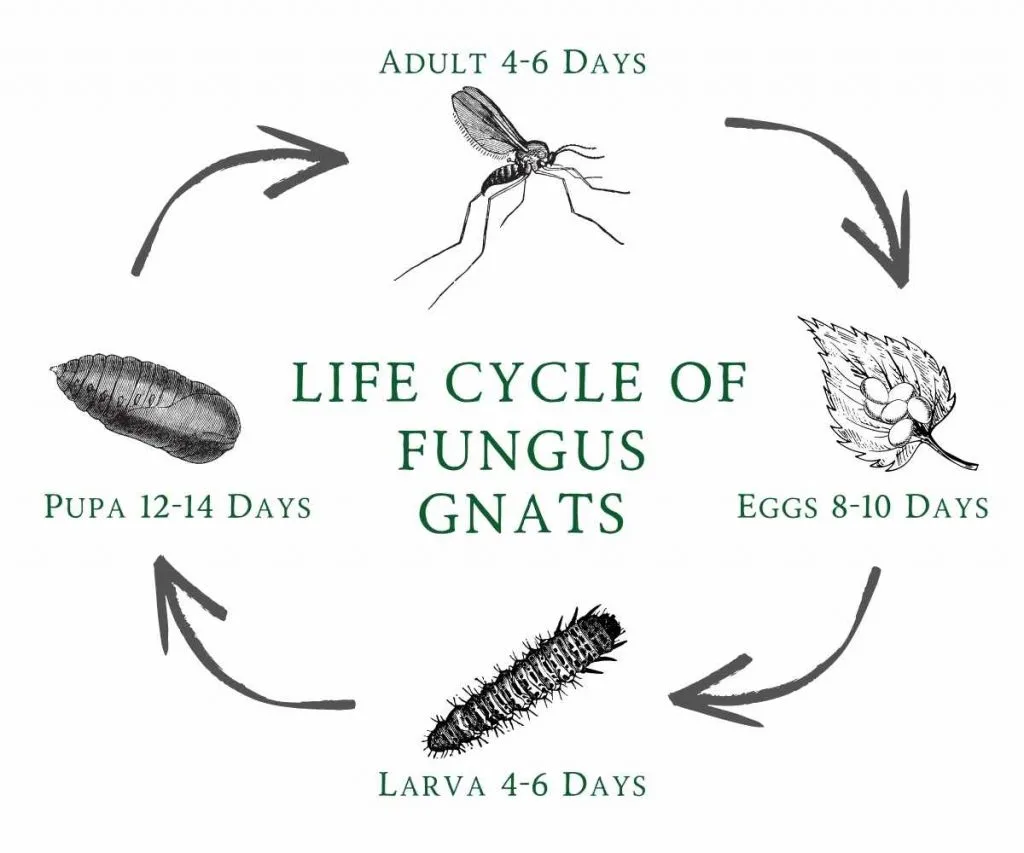
Have a large greenhouse infested? Read this on methods to get rid of gnats in commercial greenhouses.
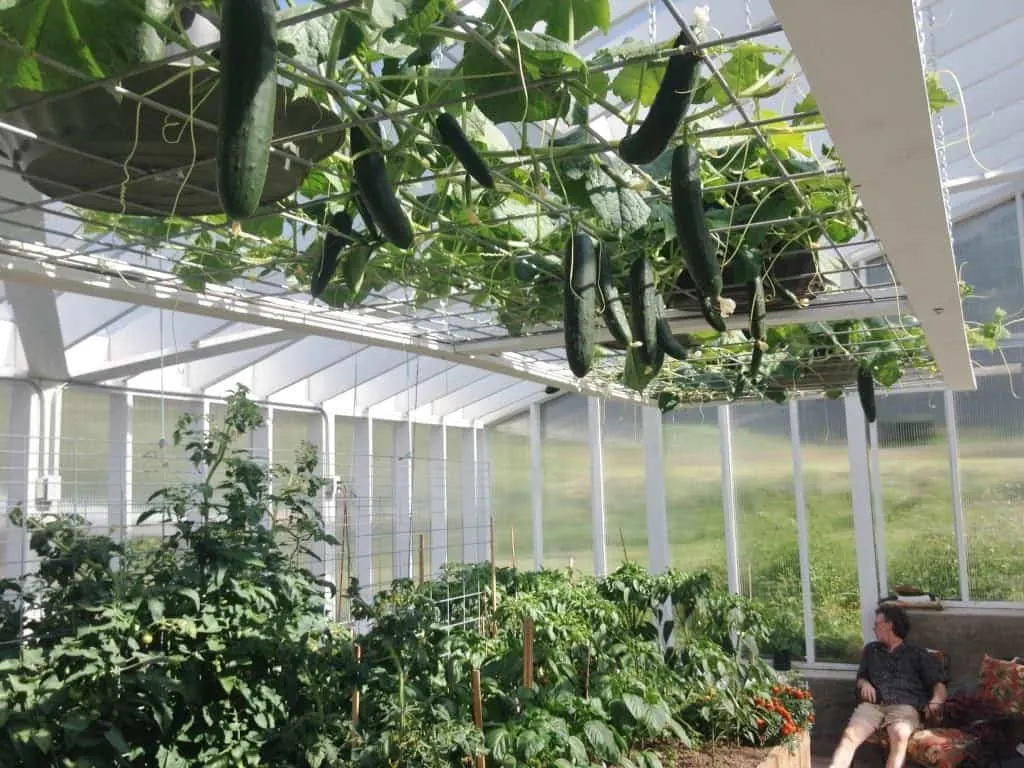
For the home and small greenhouse with a few potted plants or beds here are some ideas on how to get rid of fungus gnats.
How to kill fungus gnats:
Most effective Method to Kill Gnats:
Combining sticky traps, potato cuts and Bacillus Thuringiensis products will work well. We find this to be the most effective way to kill gnats off entirely.
The recommended method for using Mosquito bits(BTi):
- Soak 4 Tablespoons of the bits in one gallon of water for an hour. Strain out the bits and drench your plants. Repeat every three days or so until all the gnats are gone.
- BTi products require you to drench the plant in several doses to kill the gnat larvae as more emerge.
Adding the sticky traps and cut potatoes in pots at the soil line will help manage the gnat adults and larvae but will not eradicate them entirely.
However, They are a good partner to BTi. They help you monitor the plants gnats population, kill some and stay ahead of them over time. Read more about these methods in our management section below.
Products:
- Fruit Fly and Fungus Gnat Yellow sticky Traps– red sticky traps work well to attract and kill gnats.
- mosquito bits–fungus gnats are best treated with a soil drench when using Bacillus thuringiensis subspecies israelensis (Bti)products.
Managing Gnats with Sticky Traps and Potatoes
In order to detect and manage your gnat population use fungus gnat traps to attract (and kill) flying gnats. Gnats are attracted to both yellow and red sticky tape.
They will lite on the tape and stay stuck. This gives you a visual idea of how many gnats are reproducing in your plant pots.
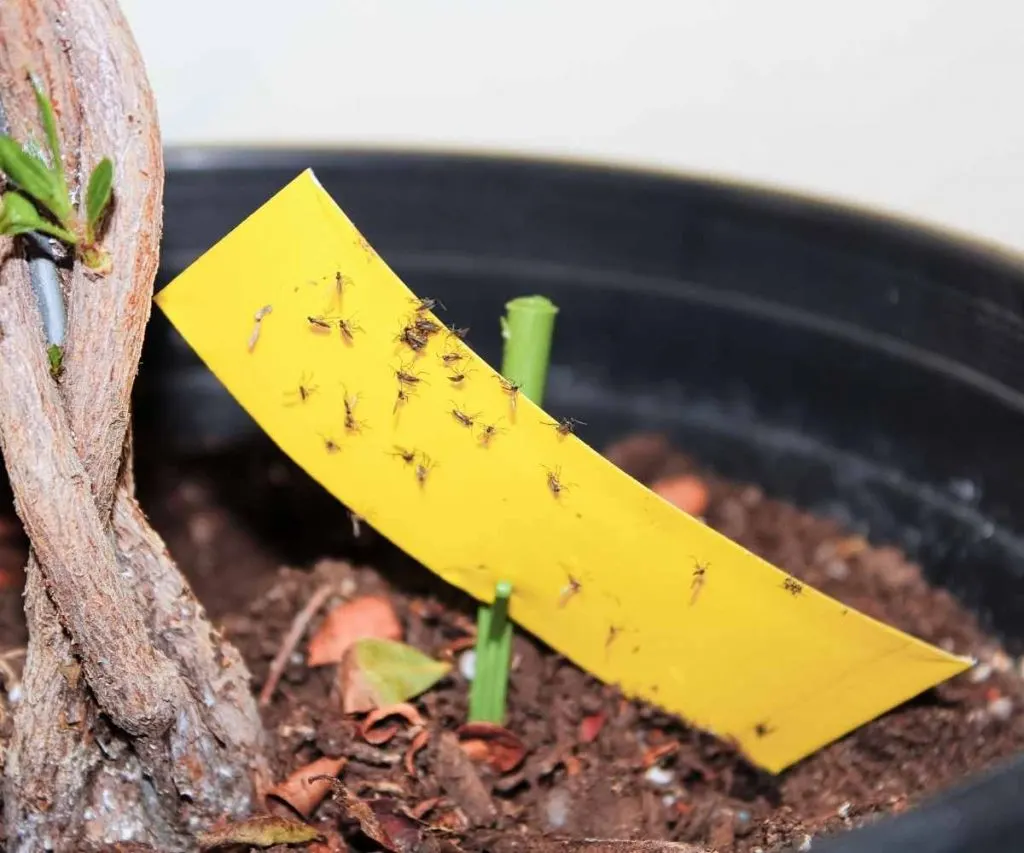
To find the larvae cut flat disk of peeled potatoes (about 1 inch around and 1/2 inch thick). Lay them on the soil. The larvae will crawl under the potatoes and you can remove them every other day or so.
The potato chunks help you keep an eye on the extent of your gnat population. Replace the potato every other day or so and repeat.
This is useful when you are in the heat of the gnat wars and wonder if you are making headway in the battle. Or think you have won and want to be absolutely SURE they are really gone from your plant pots.
You can also see the shiny trails left by the larvae as they crawl on top of the soil. EWWW….
More Ideas on killing Gnats:
Here are other methods used to control fungus gnats. but they may not eliminate fungus gnats completely.
Of the methods to kill gnats listed below I have tried the diatomaceous earth and found it sort of effective. It definitely reduced the gnat population when I stirred it into the soil.
- neem oil solutions
- cinnamon- sprinkle over the soil surface to repel gnats.
- Food Grade Diatomaceous earth-Be sure to work it into your soil to kill the larvae and pupa as well as adults. Repeat as needed.
- 3 % hydrogen peroxide-will kill the larvae on contact and also reduce attracting fungi on the soil.
- baking soil at 180 degrees F for about 45 minutes will sterilize the soil.
- To microwave your soil for sterilization: Place 4 Cups moist soil in an open microwavable dish. Microwave on high for 2 minutes 30 seconds.
- Sterilizing soil is Great to kill gnats eggs in newly purchased or reused potting soil. This will help avoid infestations in future by killing off live larvae and eggs in the soil.
Have other plant pests? Our recipe for insecticidal soap will kill insects on house and garden plants. But it’s not effective on fungus gnats.
ALSO fruit flies are attracted to water with vinegar and a drop of dish soup. Then they lite and drown. Fungus gnats are not attracted to this.
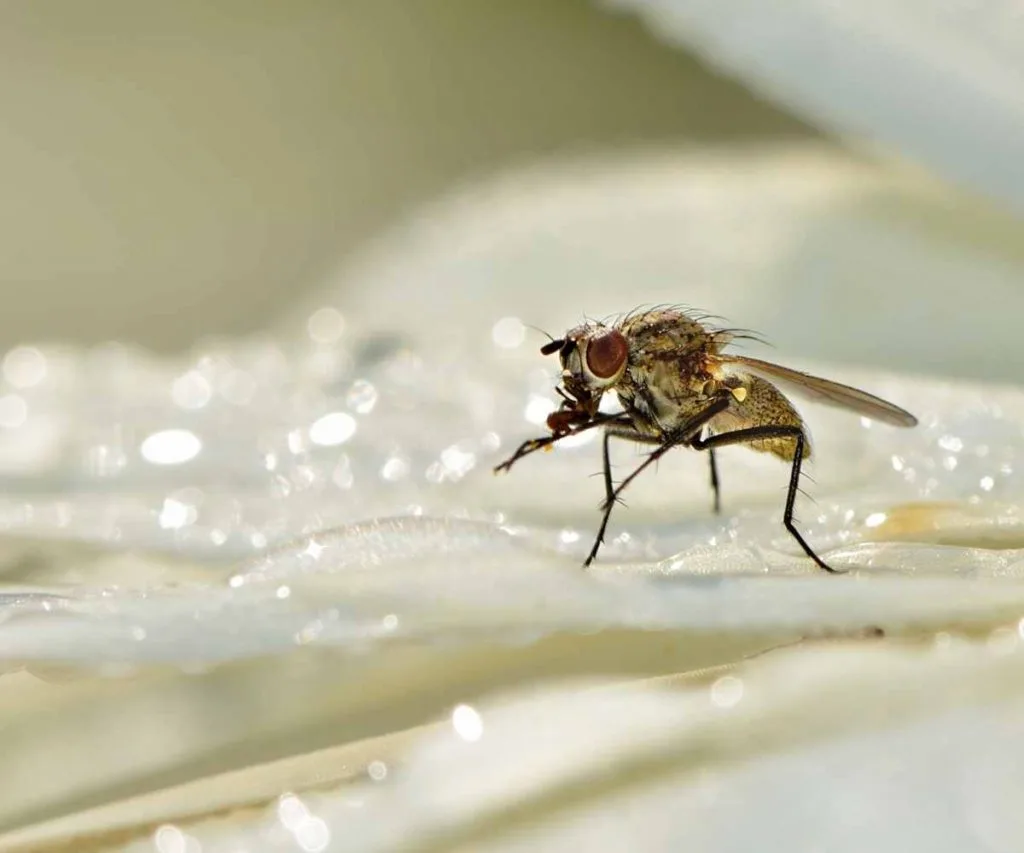
Long Term Gnat Management:
Overwatering is the main culprit. fungus gnats thrive in fungi filled moist soil. But they don’t like dry well draining soil. When you keep your plant soil constantly wet gnats will come in to set up gnat camp.
- Water your plants only when the soil is dry down an inch or so. Wet soil promotes fungi. Fungus gnats feed on fungi. The name says it all.
- Bottom watering of your plants will keep the top of the soil dry. This will help discourage gnats.
- Purchase sterilized well draining potting soil. If you can’t find sterile soil you can bake it or microwave it to kill any gnat eggs in it.
- use pebbles or rock soil toppers on the plant soil to prevent the gnats laying eggs. Gnats like full access to your soil. layer of rocks will not stop them entirely but slow them down at least.
- Don’t let algae or other fungus grow on the soil surface. This attracts and feeds gnats. Hydrogen peroxide kills fungus and larvae on contact.
- If your plant soil is turning green with fungus you are more than likely overwatering. If your plant is suffering Repot with clean soil.
- You may also have root rot at this point.
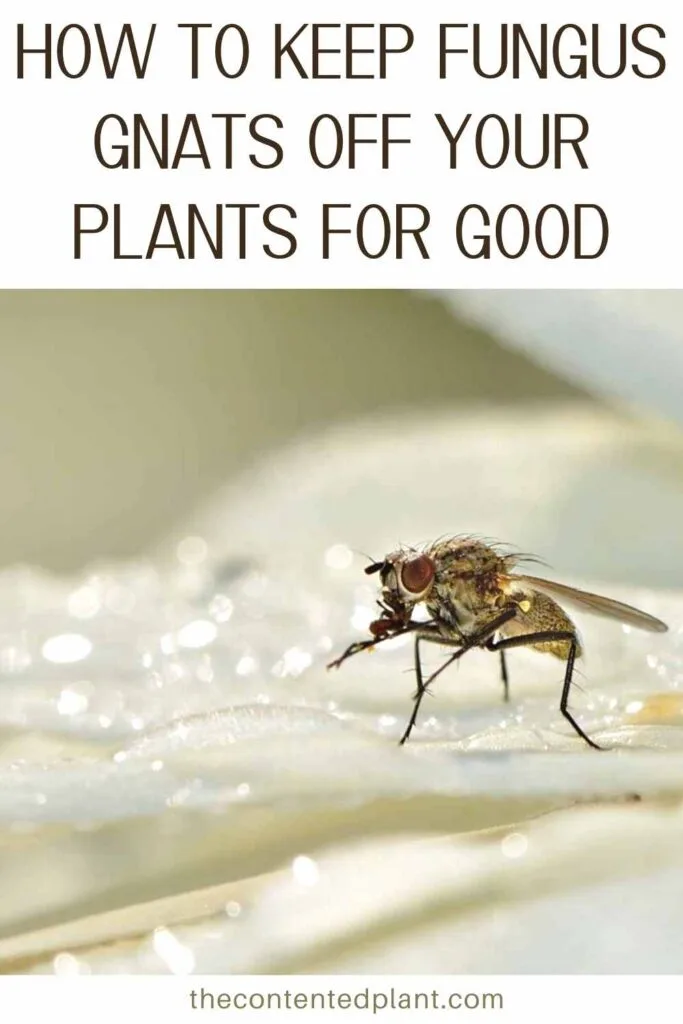
Need more ideas: This article by The University of California discusses more about biological and chemical treatments for fungus gnats.
Follow Us:
Find us on YouTube, Instagram , Pinterest and TikTok! We love to Plant chat. We also comment, like and occasionally share your content to our daily stories. We’d love to see your plants. Share your joy in your houseplants. Happy Planting!

How To Repot A Plant - The Contented Plant
Saturday 6th of January 2024
[…] like fungus gnats. However, We have other solutions and information about both moldy soils and fungus gnats without repotting. But constantly saturated soils might need to be replaced to solve these […]
How to Use Hydrogen Peroxide For plants - The Contented Plant
Wednesday 25th of May 2022
[…] Kills fungus gnats when used as a soil drench and deters sap sucking insects when regularly applied as a leaf spray. […]
Tips on how to build a pollinator garden - The Contented Plant
Tuesday 19th of April 2022
[…] How to Kill Fungus Gnats […]
Murdannia Loriformis-The Bright Star Plant - The Contented Plant
Friday 15th of April 2022
[…] from the top can attract Fungus Gnats. One way to keep the soil at the surface dry and the plant watered is to bottom water. Learn how to […]
How to get rid of Aphids - The Contented Plant
Thursday 24th of March 2022
[…] FYI: Fungus gnats on houseplants cannot be eliminated with these methods and products. Read our post on how to kill fungus gnats (and why you should) to control these disease spreading bu… […]